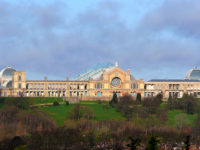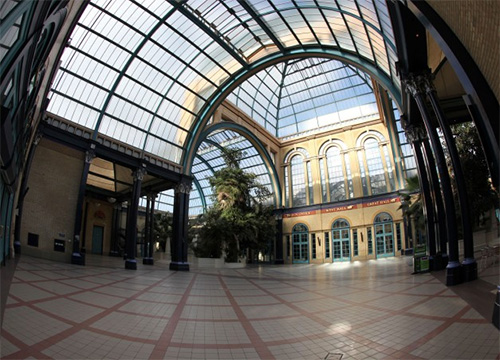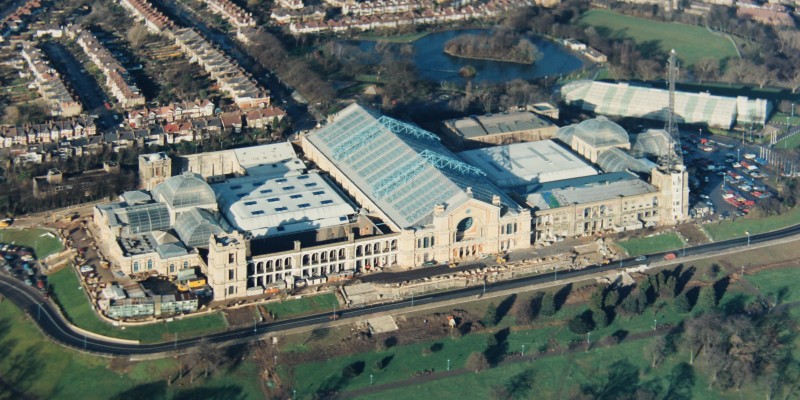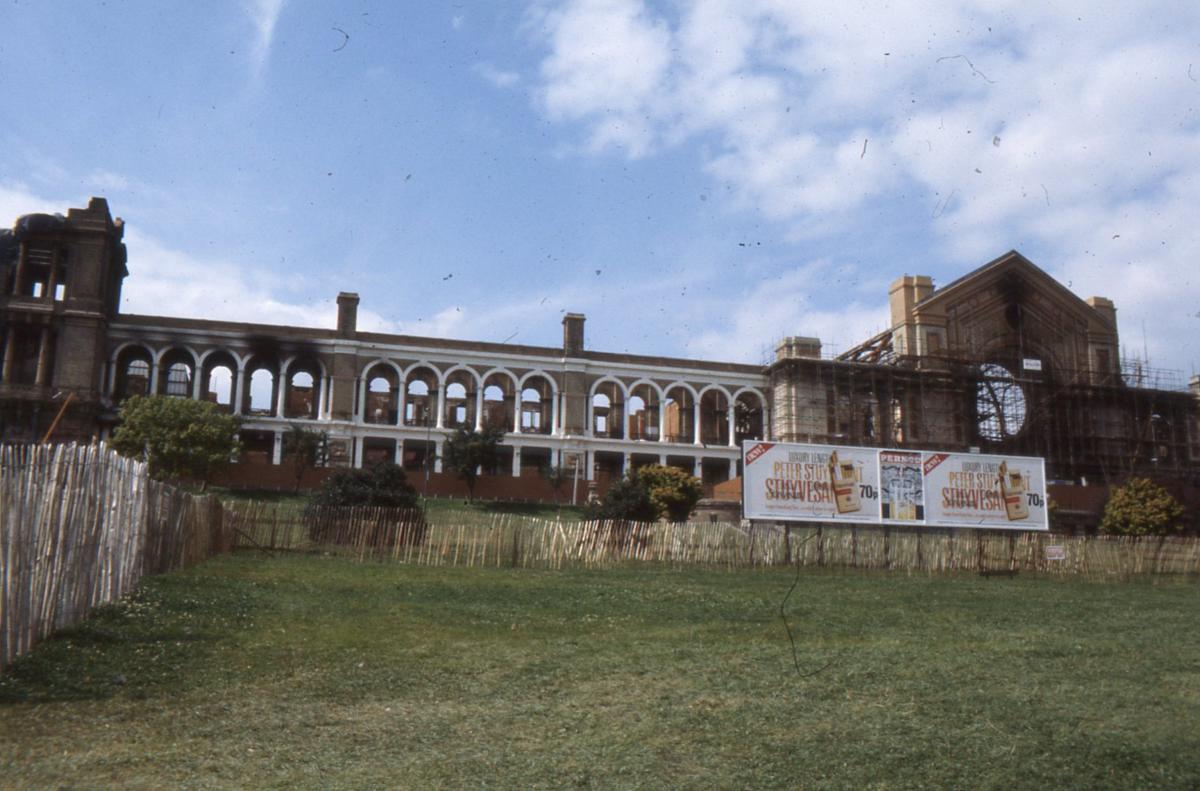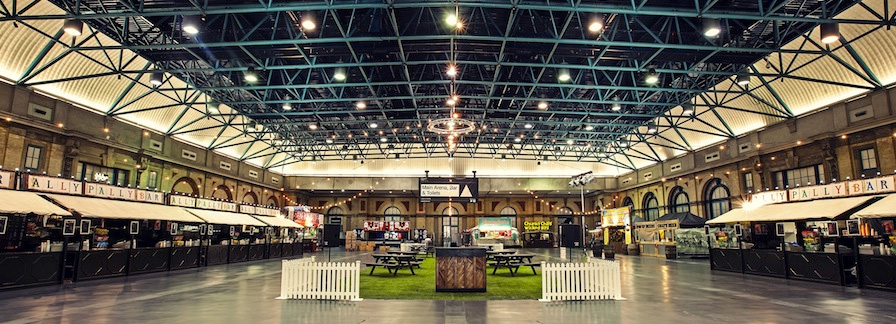A brief look at ‘Ally Pally’ and its glorious Grade II listed history
Guest post by Mike James
Did you know that Alexandra Park in North London has been named as one of the best Parks in Britain? If you live in North London, you’ll already know what a fabulous asset the 196 acres of Grade II listed parkland is to the area. Offering woodland, open grassland and formal gardens, the park also boasts a pitch-and-putt course, a boating lake, a skate park and various cafes.
The jewel in the crown, so to speak, is the iconic Alexandra Palace (Ally Pally as it is lovingly known). And spectacular doesn’t stop with the exemplary building, the park also features one of the best panoramic views London has to offer.
Location, Location, Location
Set between upmarket Muswell Hill and down-to-earth Wood Green, the area around Alexandra Park is also banked from the North by Bounds Green and Arnos Grove, and to the South by Crouch End. Muswell Hill, birthplace of brothers Ray and Dave Davies of the well-known band, The Kinks, was developed using cohesive architectural styles as a direct result of the opening of Alexandra Palace in 1873. The local area’s attractive Edwardian red brick homes are much sought after and come with a hefty price tag.
For North London diehards unable to afford property in the hugely inflated ‘Mossy Well’, the surrounding areas such as Wood Green, Bounds Green and Arnos Grove, provide a comparatively more affordable option. For those of you who don’t know, ‘Mossy Well’ is the name of the local stream discovered in the 12th century, and that which Muswell Hill was named after. The stream was thought to have miraculous, healing properties, but the only thing miraculous about Muswell Hill now days is affording the gargantuan price tag to live there.
The Beginning
Alexandra Palace was opened on Queen Victoria’s 54th birthday, in 1873, and was intended as North London’s equal to South London’s spectacular Crystal Palace. Just 16 days later tragedy struck when a fire broke out in Alexandra Palace. The new Palace was opened in 1875. Consisting of several grand leisure buildings, it included a Victorian theatre, which seated 2,500 people, and a new Henry Willis organ, which at the time was the largest of its kind in Europe.
The First World War
During the First World War, the theatre in Alexandra Palace was converted and used first as a hospital for Belgian refugees, and then in 1915 as an internment camp for UK citizens who were imprisoned due to their German, Austrian or Hungarian heritage. The Palace was transformed with barbed wire, watch towers and armed guards. The grounds were closed to the public with notices warning ‘any unauthorised person found in the grounds is liable to be shot – By Order.’
The BBC
On the 2nd November 1936, the BBC studios at Alexandra Palace broadcast the world’s first regular high-definition television service. The outbreak of war in 1939 brought programmes to a sudden halt. During the war, BBC transmitters were used to jam radio signals used by German bomber pilots.
World War II
Belgian refugees returned to the Palace during World War II. At the end of the war a flying bomb exploded to the North of the building and caused damage to the roof of the Palace’s Great Hall.
A Second Fire
In 1980, for the second time in its history, a fire broke out across Alexandra Palace, burning a large part of the building to the ground. Restoration took the best part of eight years, and the Palace re-opened in 1988.
Grade II Listing
In 1996 Alexandra Palace was recognised by Historic England as a building of significant architectural and historical interest, and it received a Grade II listing.
Present Day Ally Pally
This historic entertainment venue is typically used for exhibitions, music concerts and corporate events. It has seen the likes of legendary acts such as Jay-Z. The Rolling Stones, Morrissey, The Who and The Stone Roses, to name but a few. Rudimental are one of the latest in the long line-up of hot musical talents to perform here.
The current East Wing Restoration Project is under way and is the biggest investment in the building for a generation. The aim is to bring the Victorian theatre back to life.
Alexandra Park
The Park itself opened in 1863, 10 years prior to the Palace. It was designed by the renowned landscape architect Alexander McKenzie, and was a pioneering Victorian leisure park. From 1868 to 1970 the park boasted its own racecourse, which offered the quirkiest course in Britain. Known as the ‘frying pan’, because of its shape, it was renowned for its treacherous twists and turns. In the late 1990s, there was a movement to re-open the unique horseracing track, but ambitious plans were shelved.
Today the park is regularly transformed to entertain, as well as offering a weekly Farmer’s Market and an annual funfair, there’s also a seasonal ice rink. With landscaped gardens, natural woodland, and a kids’ adventure playground, there’s something for everyone to enjoy. Both Park and Palace really are Jewels in North London’s crown.
A bit about Mike
Provided by Mike James, an independent content writer working together with London based business Peter Barry Estate Agents.

